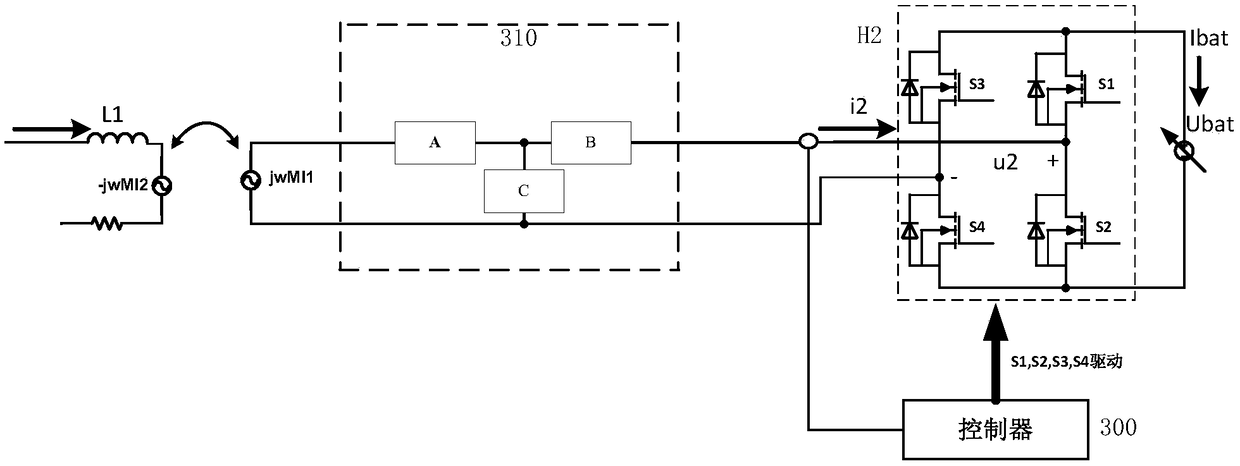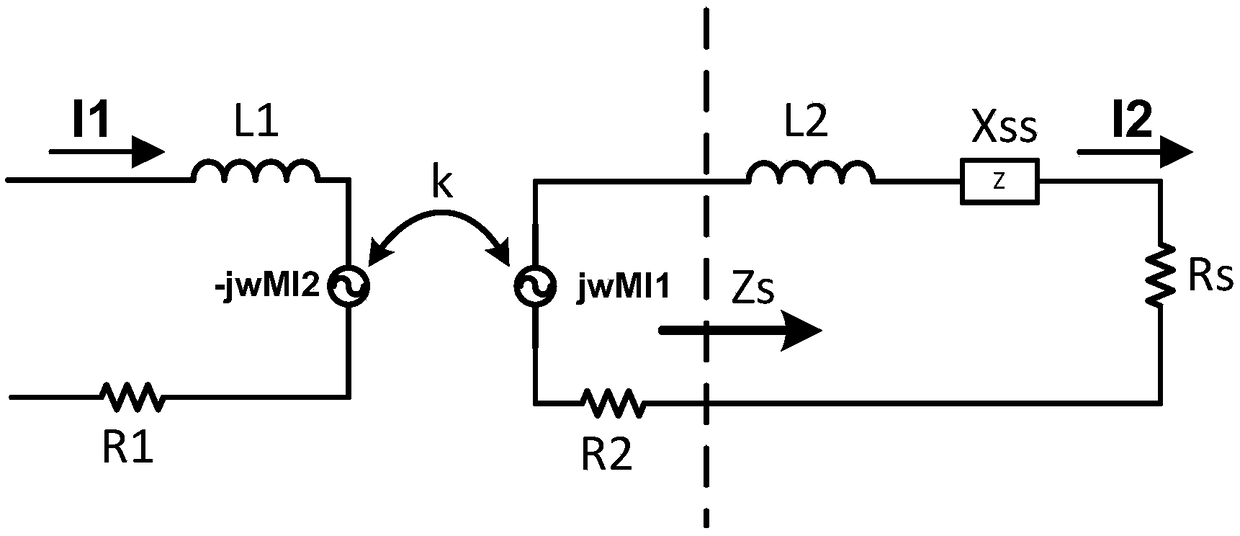Receiver of wireless charging system, control method of receiver, electrical terminal, transmitter of wireless charging system and wireless charging system
A wireless charging and receiving end technology, applied in charging stations, battery circuit devices, high-efficiency power electronic conversion, etc., can solve problems such as the reduction of output power of wireless charging systems
- Summary
- Abstract
- Description
- Claims
- Application Information
AI Technical Summary
Problems solved by technology
Method used
Image
Examples
Embodiment 1
[0089] see figure 2 , which is a schematic diagram of a receiving end of a wireless charging system provided in an embodiment of the present application.
[0090] The transmitting end and the receiving end of the wireless charging system generally include a compensation network, and the compensation network is a network formed by equivalently combining a compensation circuit and a coil. Generally, in order to achieve structural symmetry, the transmitting end and the receiving end can use the same type of compensation network. figure 2 The transmitter compensation network is not shown in the figure, only the receiver compensation network is shown.
[0091] figure 1 It has already been introduced that the receiving end includes the receiving coil, the receiving end compensation circuit and the rectifier H2, and details will not be repeated here. The improvement points of the embodiments of the present application are mainly introduced below. The receiving end of wireless c...
Embodiment 2
[0151] see Figure 7 , which is a schematic diagram of another receiving end provided by the embodiment of the present application.
[0152] Parts of the receiving end provided in this embodiment that are the same as those in Embodiment 1 will not be repeated here.
[0153] In this embodiment, the controller 300 is specifically used to control the phase difference between the first bridge arm and the second bridge arm of the rectifier H2 to be the target phase difference α; α is used to adjust the resistance of the equivalent impedance of the rectifier, in this embodiment The controller 300 receives the target phase difference α. And control the phase shift angle β of the arm voltage of the rectifier H2 and the fundamental component of the input current to be π−α+σ; σ is the first preset value; and σ is the first preset value set inside the controller 300 . The controller 300 can preset σ as a small positive value, for example, set σ as a value between. σ is used to adjus...
Embodiment 3
[0195] see Figure 12 , which is a schematic diagram of a receiving end of another wireless charging system provided by an embodiment of the present application.
[0196] Image 6, Figure 7 and Figure 12 Both are introduced by taking the integration of the sub-inductance branch and the inductance compensation module as an example.
[0197] In this embodiment, the controller 300
[0198] Specifically, the phase difference between the first bridge arm and the second bridge arm of the rectifier H2 can be controlled to be a preset phase difference α; the preset phase difference is used to adjust the resistance of the equivalent impedance of the rectifier. In this embodiment, α is the control σ is the value received by the controller 300 from the outside, and the controller 300 also controls the phase shift angle β of the bridge arm voltage of the rectifier H2 and the fundamental wave component of the input current to be π-α+σ; σ is the target value; the target value σ is used...
PUM
 Login to View More
Login to View More Abstract
Description
Claims
Application Information
 Login to View More
Login to View More - R&D
- Intellectual Property
- Life Sciences
- Materials
- Tech Scout
- Unparalleled Data Quality
- Higher Quality Content
- 60% Fewer Hallucinations
Browse by: Latest US Patents, China's latest patents, Technical Efficacy Thesaurus, Application Domain, Technology Topic, Popular Technical Reports.
© 2025 PatSnap. All rights reserved.Legal|Privacy policy|Modern Slavery Act Transparency Statement|Sitemap|About US| Contact US: help@patsnap.com



